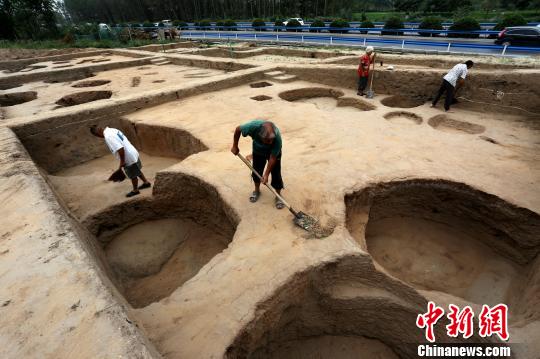 |
|
[Photo/Chinanews.com]
|
A new human site from the Yangshao Culture period was discovered by archaeologists at the junction between the Changhe River and Shicunhe River in the city of Jincheng, Shanxi province, on August 4. It was named "Shicunhe South Site."
There are a large amount of muddy red pottery pieces, thin corded pattern pieces and polished stone implements in this site, which provide evidence to study the living habits of early people in Jincheng.
The newly-discovered site is located in Zezhou county, at a tableland high in the east and low in the wast of the Shicunhe River and Changhe River's intersection. It covers an area of about 300,000 square meters.
In the relic cultural layer, archaeologists excavated a large amount of muddy red pottery pieces, thin corroded pattern pottery pieces, and other production and life appliances used by prehistoric human beings, as well as deer horns and animal teeth.
Through analysis of these appliances, the area was identified as the human site of the Neolithic Yangshao Culture. This survey is known as a subsequent survey to cooperate with the ongoing Qinshui Xiachuan Paleolithic site's excavation.
Meanwhile, large amounts of flake tools struck from chert were discovered at the site. According to Professor Du Shuisheng from Beijing Normal University, the ancestors living in the south of the Shicunhe River in Jincheng had mastered pottery manufacturing techniques and learned to use utensils to get water, cook and store food.
They lived a settled agrarian life accompanied by hunting, fishing and gathering. Professor Du believes that the flake tools struck from chert here and that of the Xiachuan Site of the Paleolithic period are similar in technical features and therefore may be related in cultural context.
We Recommend:
